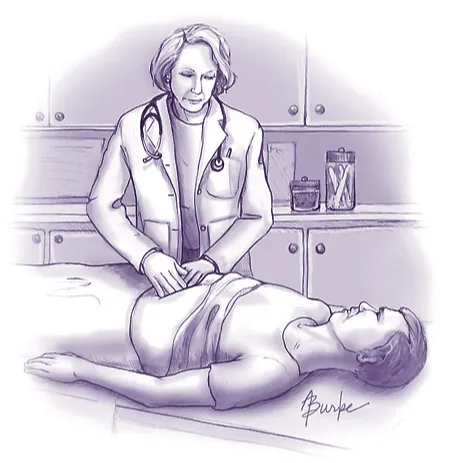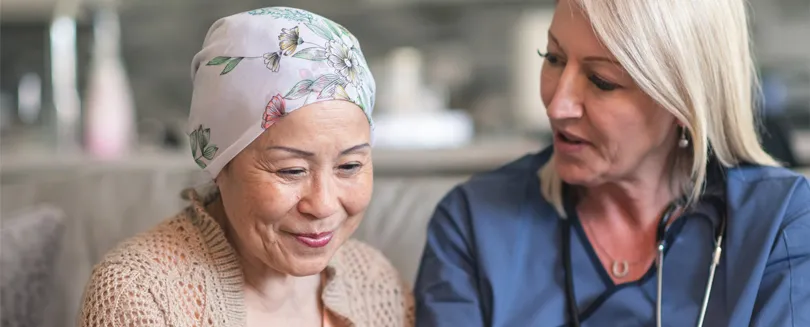Diabetes Journal of Nursing

Empowered approaches for Type 1 Diabetes patient care in Canada
Tags: diabetes
Diabetes diagnoses have skyrocketed in Canada the last two decades. Diabetes Canada released updated numbers in 2022 showing that 11.7 Million Canadians are living with Diabetes or PreDiabetes. These numbers are trending upwards with no sign of leveling off. Right now, more than $50 million dollars is spent every day on health care to treat diabetes and related complications.
Read More →
The Subtle Art of Connecting with Patients: Lessons Learned from a Seasoned Diabetes Nurse
Tags: connecting with patients diabetes diabetic patients
The thing about patients is that they are humans filled with feelings. Even the ones who appear tough and stoic on the exterior; sometimes they're the hardest. Every patient is a person, a person who has decades of life experience. Just because we are trained in Nursing, doesn't automatically give us license to be authorities. You have to earn it. You have to earn that trust. You have to listen, really hear, and pay very close attention. There is a distinct art to inviting people to relate to you, and to enable them to trust you with their healthcare, their vitality, their life. It's a gift when you can connect with a patient. It is an honour. At the end of the shift after truly helping a person, a Nurse can hold their head high and know that they've made a difference. That's the sweet spot, that's the altruism of making a difference.
Read More →
Diabetes revisited: A review of the history, the current state of medical management and what the future may hold
Tags: diabetes diabetic patients stem cell research
This article reviews the history of Diabetes, the present day medical management, and research designed to control Type I Diabetes.
Read More →
Asymptomatic Bacteriuria: The Question for Treatment
Tags: adults asymptomatic bacteriuria diabetes guidelines risk factors screening
To improve the quality of care in patients with asymptomatic bacteriuria to promote safety.
Read More →
Managing Type II Diabetes within the Hispanic Community
Tags: culture diabetes disease health patient education
Diabetes is termed the life style disease for good reason. It is a progressive and chronic illness largely caused by obesity and lack of exercise. If left untreated or poorly controlled, this disease can lead to debilitating complications and premature death.
Read More →
Basics on Inpatient Blood Sugar Control
Controlling inpatient blood sugars is challenging and complex. Inpatient blood sugars can be affected by a multitude a variables. Some of the variables are nutritional intake, inflammation, stress and steroids. Research indicates more than 50% of Americans could have diabetes or pre-diabetes by the year 2020. Healthcare costs for this population both inpatient and outpatient is enormous and growing. Many of these patients will require hospitalization. Inpatient diabetes treatment can be complex but the outcome enhancement is great. Improving inpatient blood sugar control decreases both complications and mortality. Controlling the blood sugars of this growing patient population is well worth the investment of time and resources.
Read More →
The Reality of Diabetes in Rural Mexico: A Nursing Student Perspective
Tags: diabetes mexico nursing perspective student students
Students from six universities in Canada, Mexico, and the USA participated in a service learning exchange. In order to understand the needs of diabetes patients in rural Mexico three students from Canada and the USA trudged in the heat through the rough terrain to their homes. We used Omaha System signs/symptoms to collect interview data. The standardized language of the questionnaire allowed us to be aware of the interaction between traditional medical beliefs and the western medical model. Some of these challenges include maintaining the traditional family roles, controlling blood glucose levels without the appropriate medical equipment, and economic barriers. One patient was responsible for both caring for her eight young children and working in the fields to put food on the table. Additionally, she was in a constant hypoglycemic state causing her to faint in the fields. We also visited a visually impaired man that was distraught because he needed to rely on others for help in a machismo society. He said “While living in New York City, I was a victim of a robbery. I was so afraid because I thought I was going to die and as a result I got diabetes.” Though some may find this comment strange, it is a common theory among the rural population in Mexico. We will always remember the many Mexican speculate that eating bread absorbs the scare and thus prevents diabetes. This experience gave us a glimpse of the harsh reality that these people face everyday coping with diabetes.
Read More →
Healthy Cooking for the Soul
Tags: Community Health Education Community Health Nursing cooking diabetes Health Promotion Healthy Nursing Education Research undergraduate
The purpose of this pilot study was to use motivation and coaching strategies to encourage Detroit African-American adults who are at high risk for hypertension and diabetes to change their dietary patterns. Oakland University Accelerated BSN (ABSN) student nurses designed and implemented the project to bring health coaching to the urban Indian Village community. Interventions included nutrition presentations and healthy soul-food cooking demonstrations. Information about program effectiveness was obtained through surveys. Survey scores increased for ninety percent of the participants from pre to posttest, indicating a corresponding increase in nutrition awareness. Future research is needed to determine the long-term effectiveness of the intervention strategies. The Healthy Cooking pilot project has the potential to facilitate research that will educate nursing students as well as citizens of Detroit's Indian Village.
Read More →
Getting a Foothold in the Nephronic Syndrome: Dietary Adjustments for the Chronic Hypertensive Type two Diabetic-Nephropathy Patients
Tags: advice diabetes dietary adjustments eating habits hypertensive metabolic disease type two diabetic
Moderate and/or severe protein restrictions may indeed, be proposed in chronic renal failure both to fight its symptoms and to slow its progression. In diabetic patients, whether insulin-dependent or non-insulin-dependent, have a chronic disease that has generally existed for a number of years before the onset of renal failure.
Read More →
The Importance of Communication and Education toward Patient Literacy: The Relationship of Functional Health and Patient's Knowledge of Their Chronic Disease and Metabolic Disorder
Tags: aging assessment skills clear with simplified language communication communicator diabetes direct involvement disease educator efficiency of care health health literacy knowledge patient patient education
The aging populations in the U.S. with ‘Essential’ Hypertension are showing inadequate health literacy, plus its impact on patients with idiopathic chronic diseases such as type II, adult onset Diabetes Mellitus are makeable. To identify among patients with hypertension and/or with diabetes the relationship between their functional health literacy levels, and the role of the registered nurse as communicator and educator.
Read More →Get Published for Free
Browse by Tag
advocate aging anesthesia behavior cardiac care Case Study child children clinical compassion COVID-19 critical care death diabetes disease education emergency department end of life ethical principles ethical values ethics future of nursing health health care ICU medication mental health nurse Nurse Education nursing nursing education nursing ethics nursing faculty nursing school nursing students PACU patient care patient outcomes patient safety pediatric poem profession risk factors stress student nurse students teaching therapy treatment
Most Popular Last Month
More from RN Journal
The Effect of A Neurological Training Module On The Competency of Neurocritical Care Staff Nurses
Advocacy in Nursing Practice: Let's Promote it More
The 12 Days of Christmas: Revisited for Nurses
Authentic Leadership in Nursing
Using Emotional Intelligence to Combat Nurse Bullying
I Wonder If?
Building Trusting Work Relationships in Healthcare and Beyond
Nurses Don't Eat Their Young - Unless You Believe It
The Old Machine Shop









